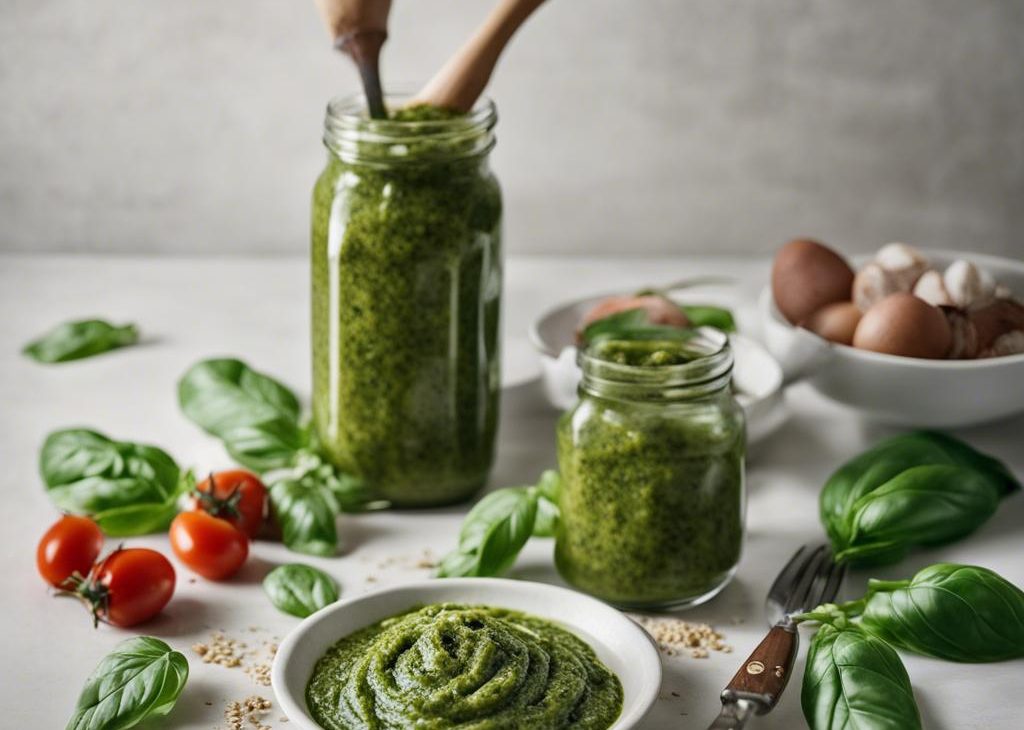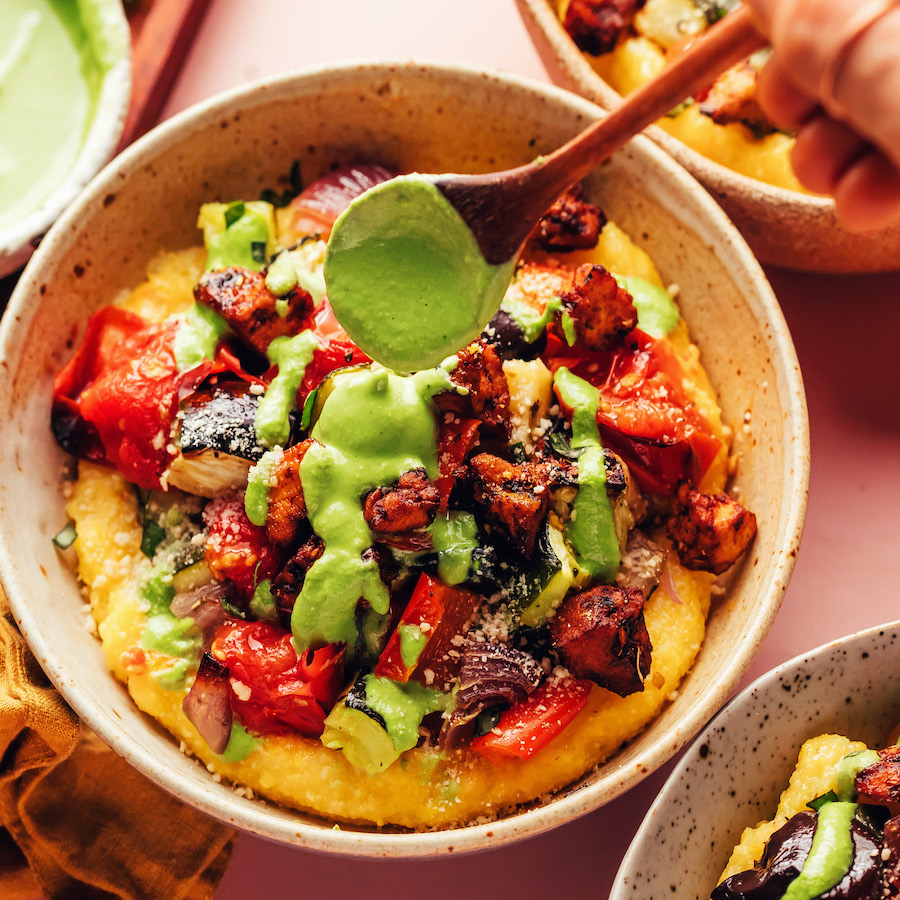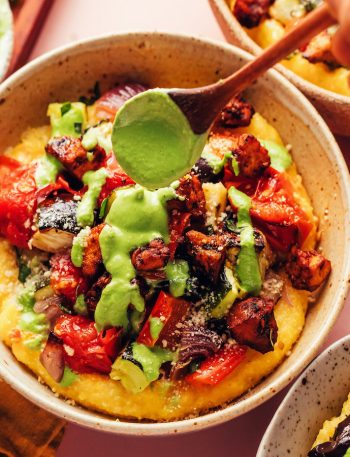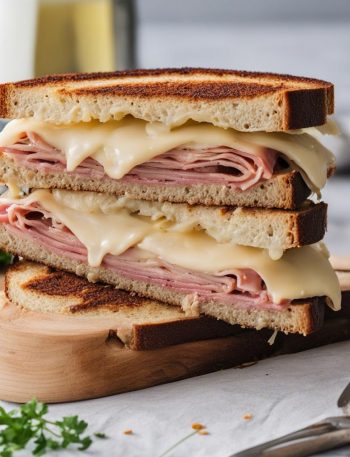
Homemade basil pesto is a wonderfully versatile and tasty sauce/spread made from a handful of flavorful ingredients. It comes together in minutes and tastes worlds better than store-bought because it’s so fresh. (Just like with lemon curd, store-bought pesto is nothing like real, FRESHLY made pesto!)
The uses for pesto are virtually endless, and you can use it in recipes like pesto pull-apart bread, pesto pizza, and this 25-minute pesto shrimp. Or use it as pasta sauce, drizzle it over grilled chicken, eggs, or roasted vegetables, spread it on sandwiches or homemade bread, or even swirl into hummus or minestrone soup.
Today’s homemade basil pesto recipe is my absolute favorite. It’s classic, simple, flavorful, and completely fresh. You’ll appreciate how easily it comes together and that it tastes infinitely better than store-bought versions. Homemade pesto can be a dip, sauce, or spread and pairs wonderfully with so many flavors. Bottom line? Pesto is an easy way to instantly elevate any savory dish.
Originating in Genoa, Italy, pesto was traditionally made by crushing the ingredients with a mortar and pestle. Now it’s typically done with the convenience of electric tools like a food processor or blender. You don’t need to cook it at all, unless you want to roast the garlic first.
This Homemade Basil Pesto Is:
- Fresh and flavorful
- Incredibly versatile
- Ready in minutes
- Made with just a few ingredients
- Easy to customize with what you have on hand
- Extra flavorful with roasted garlic
Key Ingredients You Need & Why
Make it your own: For a twist, try adding your favorite herbs like cilantro, mint, or parsley; your favorite spices like cayenne, ground ginger, paprika, or crushed red pepper flakes; or add a dash of your favorite hot sauce.
FAQ: What Can I Use Instead of Basil?
When fresh basil isn’t in season, it can be really pricey or even impossible to find. I like to use kale, spinach, or arugula in its place. You can find the kale variation I like to use in this pesto pasta salad recipe.
FAQ: What Can I Use Instead of Pine Nuts?
Pine nuts can be really expensive, not to mention hard to find! Walnuts, pistachios, and almonds are all great 1:1 substitutes and you can’t really detect a flavor difference in the finished pesto.
For nut-free pesto, try pumpkin seeds, hemp seeds, sunflower seeds, or cooked and cooled edamame.
Overview: How to Make Homemade Basil Pesto
Basil pesto comes together in a matter of minutes using a food processor or blender; just a few pulses and you’re done. The ingredients blend together rather easily, so if you don’t have a fancy food processor, don’t worry. It will still taste like pesto and it will still be good. (It’s hard to mess this up.)
- Blend the basil, pine nuts, cheese, and garlic together in a food processor or blender. Add the olive oil and pulse/process to blend. Scrape down the sides of the blender bowl, then add the lemon juice, salt, and pepper. Pulse this mixture until everything is blended together and relatively smooth. Taste and add more seasoning and any extra herbs/spices if desired.
Can I double or triple the recipe? Yes, you can easily scale up this recipe if your food processor/blender has the room!
How to Use Homemade Pesto
FAQ: How Long Does Homemade Pesto Last?
You can store this basil pesto in a jar or sealable container, then tightly seal and refrigerate for up to 1 week or freeze for up to 2–3 months. Let it thaw at room temperature or in the refrigerator.
To prevent your pesto from browning in the fridge, pour a layer of olive oil on top before tightly covering or sealing the pesto.
You could also freeze the fresh pesto in small amounts, in a greased ice cube tray, and then thaw the amount you need for a recipe when you need it, so you don’t have as much leftover to store in the fridge.

Homemade Pesto Recipe
Description
This is how I make classic basil pesto at home. It's incredibly simple and flavorful and uses only a handful of fresh ingredients.
Ingredients You’ll Need
Instructions
- Pulse the basil, pine nuts, cheese, and garlic together in a food processor or blender. Scrape down the sides, then add the oil, lemon juice, and salt. Pulse until everything is blended together and relatively smooth. Add a drizzle more olive oil to thin out, if desired. Taste and add pepper (and/or more salt) if desired. I always add a pinch of pepper.
- Store pesto in a jar or sealable container, tightly seal, and refrigerate for up to 1 week.







